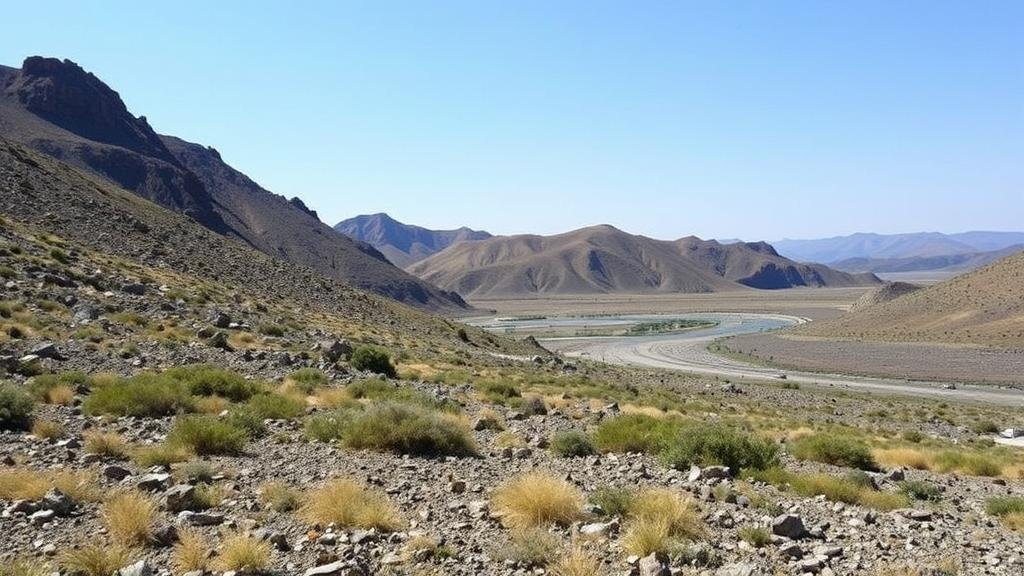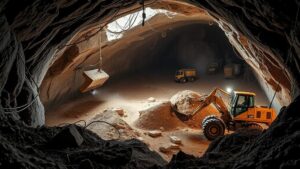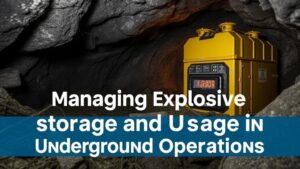Recovering Silver From Oxidized Surface Ores in Remote Locations
Recovering Silver From Oxidized Surface Ores in Remote Locations
Silver recovery from oxidized surface ores presents unique challenges, particularly in remote locations. The oxidation of silver-containing ores can alter their chemical and physical properties, complicating recovery efforts. This article examines the methodologies, challenges, and solutions associated with silver extraction from these ores.
Understanding Oxidized Surface Ores
Oxidized surface ores refer to oxidized forms of minerals that contain silver. e ores are typically found at or near the surface and often result from prolonged exposure to atmospheric conditions. The oxidation process can lead to the formation of several secondary mineral species, such as silver sulfides and silver carbonates. Understanding these processes is vital, as they influence extraction techniques.
- Silver Chloride (AgCl): Formed when silver ions react with chloride ions.
- Silver Oxide (Ag2O): Formed under oxidative conditions, representing another pathway for extraction.
Challenges in Remote Locations
Recovering silver in remote locations incurs various challenges, including logistical barriers, limited access to technology, and environmental considerations. Also, the low concentration of silver in oxidized ores necessitates efficient recovery methods to justify the economic costs.
- Logistics: Transporting equipment and personnel can be difficult, often requiring the use of helicopters or off-road vehicles.
- Technology: The lack of advanced processing facilities can limit the application of modern extraction methods.
- Environmental Concerns: Operations may face scrutiny regarding their impact on local ecosystems.
Methods of Silver Recovery
Several methods can be utilized to recover silver from oxidized ores, each with its advantages and disadvantages. Understanding these methods is crucial to determining the best approach for a specific ore type and location.
1. Cyanidation
Cyanidation is one of the most widely employed methods for silver extraction. process involves dissolving silver ores in a cyanide solution, allowing for the metals recovery through precipitation.
- Example: At the Cortez mine in Nevada, USA, cyanidation has been effectively used to recover silver along with gold from oxidized ores.
- Concerns: Environmental risks associated with cyanide leaching, necessitating stringent safety protocols.
2. Flotation Techniques
Flotation involves the use of chemicals to separate hydrophobic materials from hydrophilic ones. This technique can be highly effective in concentrating silver from oxidized ores before further processing.
- Case Study: The Penasquito mine in Mexico employs flotation techniques to improve silver and gold recovery rates.
- Advantages: Enables recovery of fine particles of silver that are often lost in other processes.
3. Bioleaching
Bioleaching utilizes microorganisms to extract metals from ores. This environmentally friendly process can be particularly advantageous in remote sites with limited infrastructure.
- Real-world Application: The use of bioleaching has been tested in Chile, where microbial action successfully extracted silver from oxidized ores.
- Potential: Offers a sustainable approach, reducing the need for harsh chemicals.
Case Study: Remote Extraction Project
An exemplary case is the initiative taken at the El Toqui mine in Chile, where engineers employed advanced techniques to optimize silver recovery from oxidized ores in a challenging environment. By integrating flotation and cyanidation, the team achieved over 90% recovery. Given the remote location, they implemented mobile processing units, thus minimizing logistical constraints.
Conclusion and Actionable Takeaways
Recovering silver from oxidized surface ores in remote locations requires strategic planning and the adoption of suitable technologies. By understanding the properties of the ores, selecting appropriate extraction methods, and considering environmental impacts, operators can successfully improve recovery rates. Key takeaways for stakeholders include:
- Conduct detailed mineralogical studies to understand ore composition.
- Evaluate the feasibility of multiple extraction methods based on location and available resources.
- Prioritize environmentally friendly practices like bioleaching when possible.
Through careful analysis and innovative methods, silver recovery from oxidized surface ores can become economically viable, even in the most remote locations.



